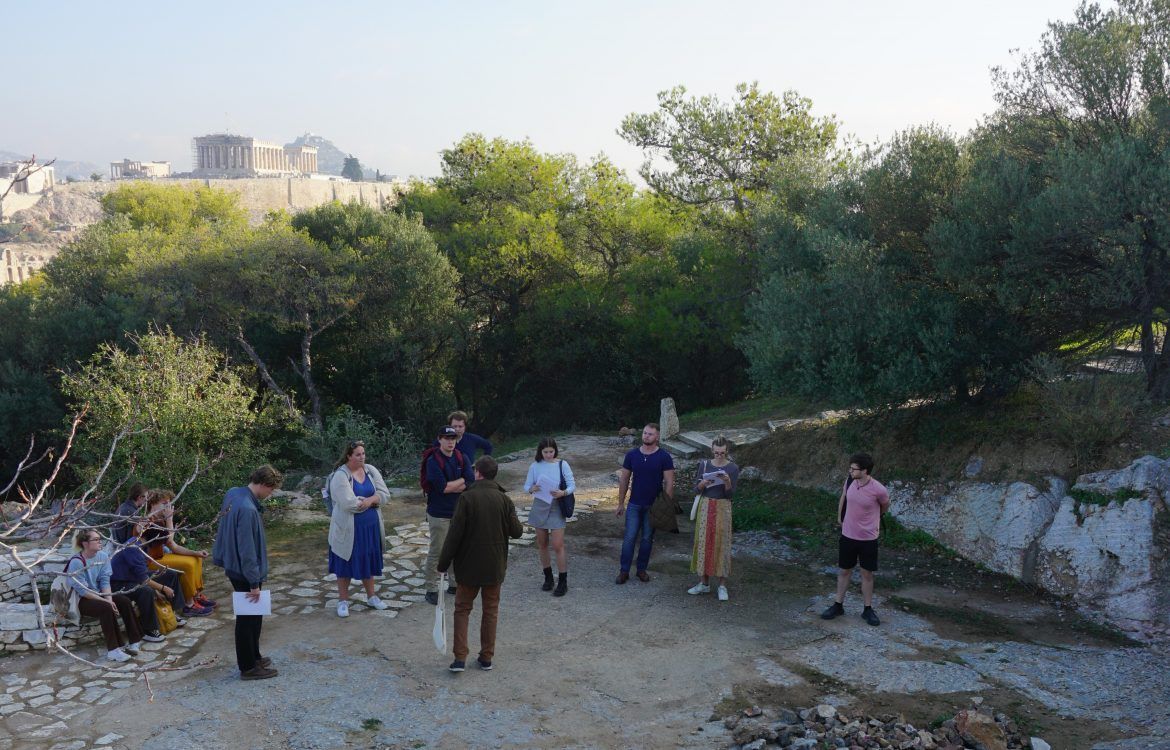
The Privilege of Coming Face to Face with History
CYA offers a variety of courses intended for students with some background in archaeology or ancient history. One of those is The Topography and Monuments of Athens, taught by Robert Pitt.
This is an exclusively site-based course focusing on the great monuments of Classical and Roman Athens. Students are guided in exploring all major sites and many minor ones, studying their characteristics, and painting a picture of the political, religious, and social lives of the Athenians.
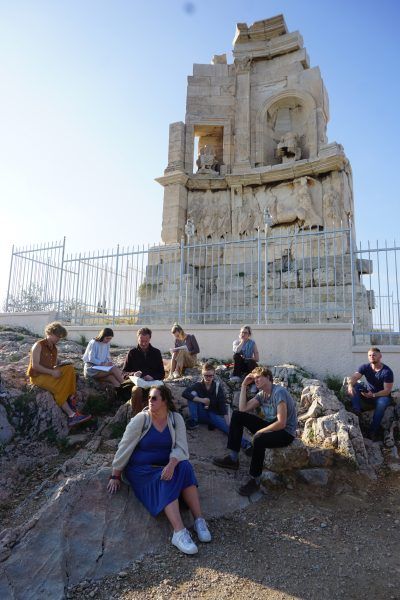
Robert Pitt’s students often have the privilege of gaining access to parts of sites closed off to the general public, and meeting experts that give them first-hand information on the work currently conducted.
This semester, the class had the opportunity to get behind-the-ropes access to the Propylaia and the temple of Athena Nike. They were also admitted into the bastion under the temple, a place Pitt himself had never visited before. He called this opportunity ‘a great privilege’.
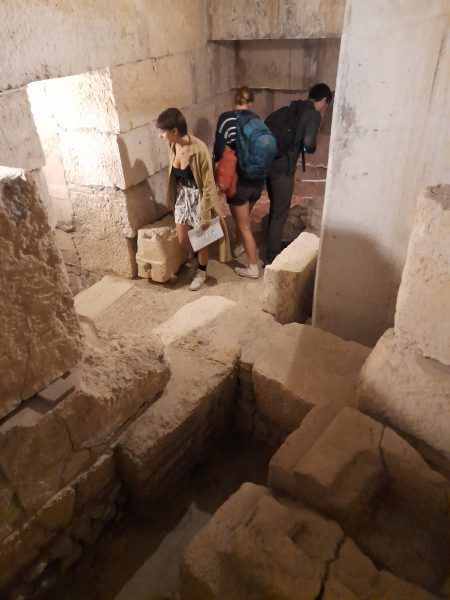
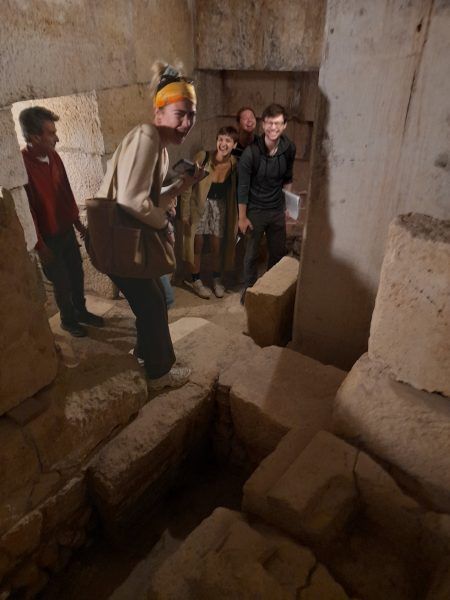
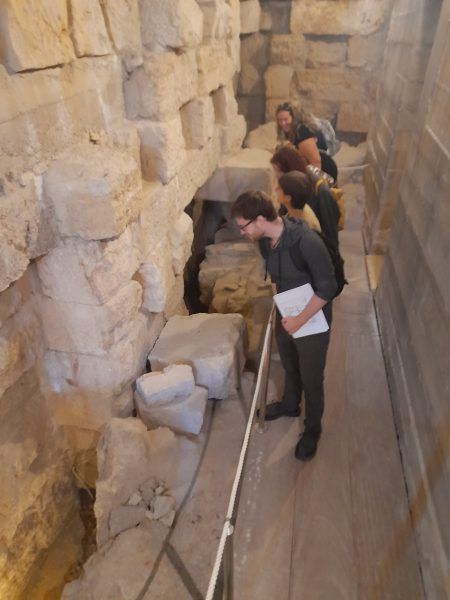
“In our teaching at CYA we endeavor to introduce our students to the latest research, and to engage them with recent excavations perhaps decades before that information ever reaches the standard textbooks,” Pitt says.
A key element of this course is student presentations. With a detailed bibliography provided by the instructor, each student is assigned a monument or site to research and guide the class group during their visit. The presentations often result in engaging conversations and debates.

CYA Fall ‘22 Student presenting in front of the Filopappou Memorial
The combination of meeting experts, examining sources, presenting on-site, and, most of all, coming face-to-face with historical sites, results in a memorable learning experience. For CYA alumnus of 2021-22 Louis Rodrigues, it was his favorite one of his classes. “Studying abroad has affirmed my professional pursuit of archaeological work abroad”. he says.
“In Greece that knowledge comes alive in the places they visit, whether following in the footsteps of Thucydides over a battlefield, or standing on the same speaker’s platform on the Pnyx where Demosthenes stood long ago to persuade the Athenian democracy of his policies, or reading the ancient names carved into the seats of the Theatre of Dionysos and wondering about those ancient spectators and the plays they had watched,” says Pitt.
Other courses taught by R. Pitt
-
Ancient History: Sources and Methods
-
The Strangeness of Ancient Greece: Diversity, Difference and Regionality among the Greek States (Athens, Paros, Peloponnese)
-
The Greek Stones Speak: An Introduction to Greek Epigraphy






